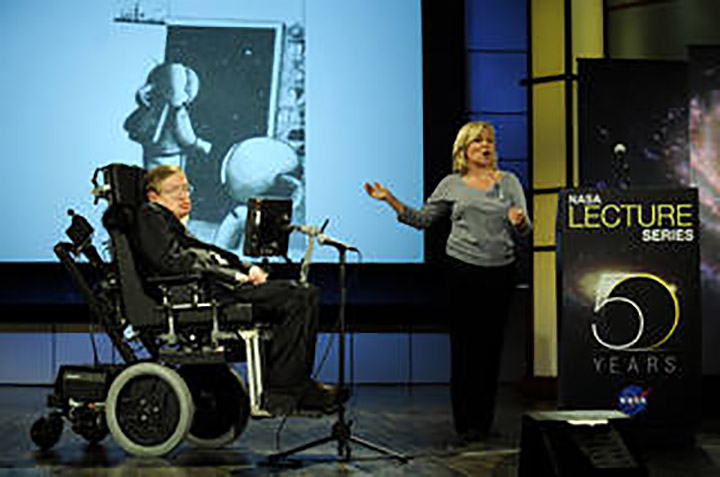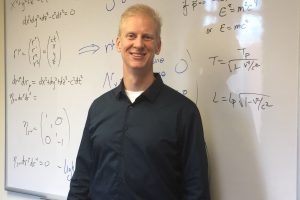I’d like to Ask a Redbird Scholar what exactly Stephen Hawking contributed to our understanding of the universe. I feel like I have a vague understanding, but don’t know anything concrete!
—Dillon Maher ’17, Bloomington
Stephen Hawking contributed more to our understanding of gravity than anyone else since Albert Einstein. His most famous result is the startling discovery that black holes radiate. In fact, under some circumstances, they will lose mass and eventually disintegrate completely.
Appears InThe reason this discovery is startling is that Einstein’s theory of general relativity predicts that black holes have an “event horizon.” Matter can fall into a black hole, but nothing can escape. Even light would be pulled back into the black hole if it began inside the event horizon. This is, in fact, the reason these “holes” are called black. Classically, according to Einstein’s theory, nothing, not even light, can escape. Therefore, classically, black holes do not radiate.
However, our world is not classical. It is quantum, and Einstein’s general theory of relativity fails to include quantum effects. Hawking realized this and set out to determine whether combining general relativity and quantum mechanics would allow black holes to radiate. The answer, he found, was yes.
Classical general relativity predicts that space-time is curved around a black hole, similar to the way a trampoline curves around a bowling ball. Roughly speaking, quantum mechanics predicts that the vacuum surrounding a black hole is not empty or dull. Rather, it is a bubbling broth of particle-antiparticle pairs that come into existence only to disappear again shortly after as they annihilate one another. Hawking realized that, due to the extreme gravity around a black hole, if these particle-antiparticle pairs were created near the event horizon, one particle of the pair could be dragged into the black hole while the other could escape. The escaping particle forms the radiation while the infalling particle, which has negative energy, decreases the mass of the black hole.
Of course, this is only the hand-waving explanation. Hawking did the full calculation using quantum field theory in a curved space-time background. Furthermore, he did this while being paralyzed and confined to a wheelchair. Consequently, perhaps Hawking’s greatest achievement is showing us that anything really is possible, even in the most difficult of circumstances.
Neil Christensen, assistant professor, Department of Physics
Our top faculty experts answer questions from the Illinois State University community in the “Ask a Redbird Scholar” section. To submit a question, email Kevin Bersett at kdberse@IllinoisState.edu or tweet it to @ISUResearch. Chosen questions and answers appear in each issue of Illinois State’s new research magazine, the Redbird Scholar. To read other “Ask a Redbird Scholar” posts, visit IllinoisState.edu/RedbirdScholar.


